Quality of care at childbirth: Findings of IMAgiNE EURO in Italy during the first year of the COVID-19 pandemic
- PMID: 35092692
- PMCID: PMC9087757
- DOI: 10.1002/ijgo.14119
Quality of care at childbirth: Findings of IMAgiNE EURO in Italy during the first year of the COVID-19 pandemic
Abstract
Objective: Investigate the quality of maternal and newborn care (QMNC) during childbirth in the first year of COVID-19 pandemic in Italy, from the mothers' perspective, as key service users.
Methods: Women who gave birth in an Italian facility from March 1, 2020 to February 29, 2021 answered an online questionnaire including 40 WHO Standard-based Quality Measures. Descriptive and multivariate quantile regression analyses were performed.
Results: In total, 4824 women were included, reporting heterogeneity of practices across regions: among 3981 women who underwent labour 78.4% (63.0%-92.0%) were not allowed a companion of choice, 44.6% (28.9%-53.3%) had difficulties in attending routine antenatal visits, 36.3% (24.9%-61.1%) reported inadequate breastfeeding support, 39.2% (23.3%-62.2%) felt not involved in medical choices, 33.0% (23.9%-49.3%) experienced unclear communication from staff, 24.8% (15.9%-39.4%) were not always treated with dignity and 12.7% (10.1%-29.3%) reported abuses. Findings in the group of women who did not experience labour were substantially similar. Multivariate analyses confirmed a significant lower QMNC index for regions in southern Italy compared to North and Central regions.
Conclusion: Mothers reported substantial inequities in the QMNC across Italian regions. Future studies should monitor QMNC over time. Meanwhile, actions to ensure high QMNC for all mothers and newborns across Italy are urgently required.
Keywords: COVID-19; European region; childbirth; hospital; maternal; newborn; quality of care; questionnaire; survey.
© 2022 The Authors. International Journal of Gynecology & Obstetrics published by John Wiley & Sons Ltd on behalf of International Federation of Gynecology and Obstetrics.
Conflict of interest statement
The authors have no conflicts of interest.
Figures
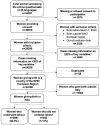
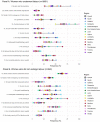
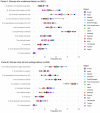
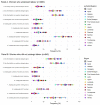
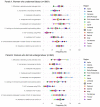
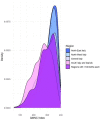

Similar articles
-
Quality of maternal and newborn care around the time of childbirth in Luxembourg during the COVID-19 pandemic: Results of the IMAgiNE EURO study.Int J Gynaecol Obstet. 2022 Dec;159 Suppl 1(Suppl 1):113-125. doi: 10.1002/ijgo.14473. Int J Gynaecol Obstet. 2022. PMID: 36530011 Free PMC article.
-
Quality of care at childbirth during the COVID-19 pandemic in Belgium: a cross-sectional study based on WHO standards.BMJ Open. 2024 Dec 27;14(12):e086937. doi: 10.1136/bmjopen-2024-086937. BMJ Open. 2024. PMID: 39732493 Free PMC article.
-
Quality of health care around the time of childbirth during the COVID-19 pandemic: Results from the IMAgiNE EURO study in Norway and trends over time.Int J Gynaecol Obstet. 2022 Dec;159 Suppl 1(Suppl 1):85-96. doi: 10.1002/ijgo.14460. Int J Gynaecol Obstet. 2022. PMID: 36530008 Free PMC article.
-
Quality of facility-based maternal and newborn care around the time of childbirth during the COVID-19 pandemic: online survey investigating maternal perspectives in 12 countries of the WHO European Region.Lancet Reg Health Eur. 2022 Feb;13:100268. doi: 10.1016/j.lanepe.2021.100268. Epub 2021 Dec 24. Lancet Reg Health Eur. 2022. PMID: 34977838 Free PMC article.
-
Clinical guidelines for caring for women with COVID-19 during pregnancy, childbirth and the immediate postpartum period.Women Birth. 2021 Sep;34(5):455-464. doi: 10.1016/j.wombi.2020.10.015. Epub 2020 Nov 3. Women Birth. 2021. PMID: 33191126 Free PMC article. Review.
Cited by
-
Quality of maternal and newborn care around the time of childbirth for migrant versus nonmigrant women during the COVID-19 pandemic: Results of the IMAgiNE EURO study in 11 countries of the WHO European region.Int J Gynaecol Obstet. 2022 Dec;159 Suppl 1(Suppl 1):39-53. doi: 10.1002/ijgo.14472. Int J Gynaecol Obstet. 2022. PMID: 36530012 Free PMC article.
-
Women's assessment of the quality of hospital-based perinatal care by mode of birth in Romania during the COVID-19 pandemic: Results from the IMAgiNE EURO study.Int J Gynaecol Obstet. 2022 Dec;159 Suppl 1(Suppl 1):126-136. doi: 10.1002/ijgo.14482. Int J Gynaecol Obstet. 2022. PMID: 36530009 Free PMC article.
-
Health workers' perspectives on the quality of maternal and newborn health care around the time of childbirth: Results of the Improving MAternal Newborn carE in the EURO Region (IMAgiNE EURO) project in 12 countries of the World Health Organization European Region.J Glob Health. 2024 Sep 6;14:04164. doi: 10.7189/jogh.14.04164. J Glob Health. 2024. PMID: 39238363 Free PMC article. Clinical Trial.
-
[Traumatic childbirth and trauma-sensitive obstetric support].Nervenarzt. 2023 Sep;94(9):811-820. doi: 10.1007/s00115-023-01510-7. Epub 2023 Jun 23. Nervenarzt. 2023. PMID: 37351670 Review. German.
-
Needs, rights and perspectives in the Birth Care Pathway during COVID-19 lockdown in Italy: the BiSogni Study, an exploratory qualitative research.BMC Public Health. 2024 Dec 21;24(1):3557. doi: 10.1186/s12889-024-20941-8. BMC Public Health. 2024. PMID: 39709378 Free PMC article.
References
-
- Zanardo V, Tortora D, Guerrini P, et al. Infant feeding initiation practices in the context of COVID‐19 lockdown. Early Hum Dev. 2021;152:105‐286.
-
- Bartick MC, Valdés V, Giusti A, et al. Maternal and infant outcomes associated with maternity practices related to COVID‐19: the COVID mothers study. Breastfeed Med. 2021;16(3):189‐199. - PubMed
MeSH terms
LinkOut - more resources
Full Text Sources
Medical

